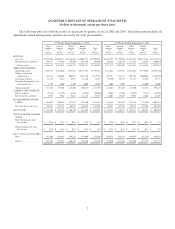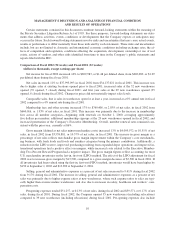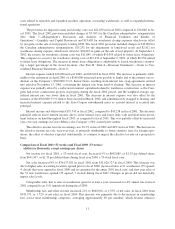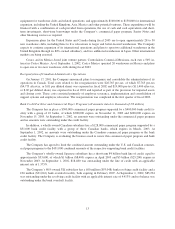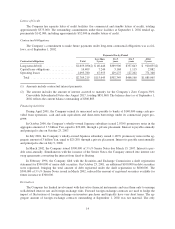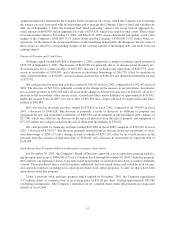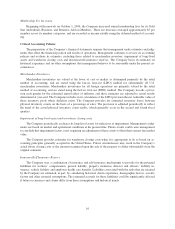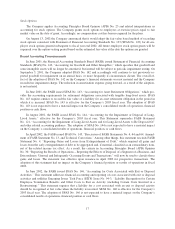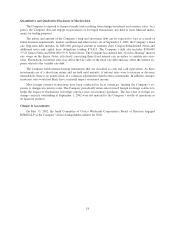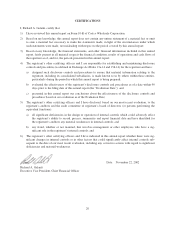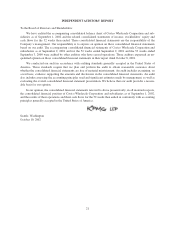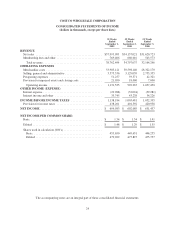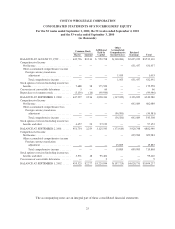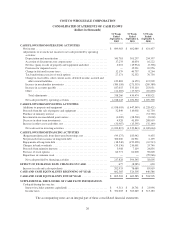Costco 2002 Annual Report Download - page 17
Download and view the complete annual report
Please find page 17 of the 2002 Costco annual report below. You can navigate through the pages in the report by either clicking on the pages listed below, or by using the keyword search tool below to find specific information within the annual report.Membership Fee Increases
Beginning with renewals on October 1, 2000, the Company increased annual membership fees for its Gold
Star (individual), Business, and Business Add-on Members. These fee increases averaged approximately $5 per
member across its member categories, and are recorded as income ratably using the deferred method of account-
ing.
Critical Accounting Policies
The preparation of the Company’s financial statements requires that management make estimates and judg-
ments that affect the financial position and results of operations. Management continues to review its accounting
policies and evaluate its estimates, including those related to merchandise inventory, impairment of long-lived
assets and warehouse closing costs and insurance/self-insurance reserves. The Company bases its estimates on
historical experience and on other assumptions that management believes to be reasonable under the present cir-
cumstances.
Merchandise Inventories
Merchandise inventories are valued at the lower of cost or market as determined primarily by the retail
method of accounting, and are stated using the last-in, first-out (LIFO) method for substantially all U.S.
merchandise inventories. Merchandise inventories for all foreign operations are primarily valued by the retail
method of accounting, and are stated using the first-in, first-out (FIFO) method. The Company records a provi-
sion each quarter for the estimated annual effect of inflation, and these estimates are adjusted to actual results
determined at year-end. The Company includes in its calculation of the LIFO provision the net realizable value of
those inventory pools where deflation exists. The Company provides for estimated inventory losses between
physical inventory counts on the basis of a percentage of sales. The provision is adjusted periodically to reflect
the trend of the actual physical inventory count results, which generally occur in the second and fourth fiscal
quarters.
Impairment of long-lived assets and warehouse closing costs
The Company periodically evaluates its long-lived assets for indicators of impairment. Management’s judg-
ments are based on market and operational conditions at the present time. Future events could cause management
to conclude that impairment factors exist, requiring an adjustment of these assets to their then-current fair market
value.
The Company provides estimates for warehouse closing costs when it is appropriate to do so based on ac-
counting principles generally accepted in the United States. Future circumstances may result in the Company’s
actual future closing costs or the amount recognized upon the sale of the property to differ substantially from the
original estimates.
Insurance/Self Insurance Reserve
The Company uses a combination of insurance and self-insurance mechanisms to provide for the potential
liabilities for workers’ compensation, general liability, property insurance, director and officers’ liability in-
surance, vehicle liability and employee health care benefits. Liabilities associated with the risks that are retained
by the Company are estimated, in part, by considering historical claims experience, demographic factors, severity
factors and other actuarial assumptions. The estimated accruals for these liabilities could be significantly affected
if future occurrences and claims differ from these assumptions and historical trends.
16



